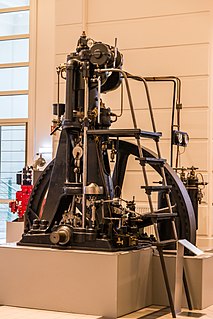
The Mazda Bongo, also known as Mazda E-Series, Mazda Access, and the Ford Econovan, was a cabover van and pickup truck manufactured by the Japanese automobile manufacturer Mazda since 1966. It has been built with rear-, middle-, as well as front-mounted engines. It also formed the basis for the long running Kia Bongo range. It is named for the African Bongo, a type of antelope.

The Volvo 300 Series is a rear wheel drive small family car sold as both a hatchback and (later) a conventional saloon from 1976 to 1991. It was launched in the Netherlands shortly after Volvo acquired a major stake in the passenger car division of DAF in 1973. The series consisted of the Volvo 340 and the later Volvo 360.

The Toyota Hilux is a series of light commercial vehicles produced and marketed by the Japanese automobile manufacturer Toyota. The majority of these vehicles were sold as pickup truck or cab chassis variants although they could be configured in a variety of body styles. Most countries used the Hilux name for the entire life of the series but in North America, the Hilux name was retired in 1976 in favor of Truck, Pickup Truck, or Compact Truck. In North America the popular option package, the SR5, was colloquially used as a model name for the truck, even though the option package was also used on other Toyota models like the 1972 to 1979 Corolla. In 1984, the Toyota Trekker, the camper version of the Hilux, was renamed as the 4Runner in Australia and North America, and as the Hilux Surf in Japan. In 1995, Toyota introduced a new pickup model, the Tacoma in North America, thus discontinuing the Hilux/Pickup. The 4Runner is now a full SUV, and the more recent models of the Hilux are separate in appearance from the Tacoma.
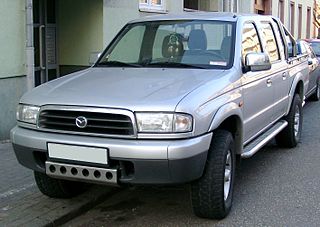
The Mazda B series is a series of pickup trucks first manufactured in 1961 by Mazda. Since the launch of the B series, Mazda has used the engine displacement to determine each model's name; the B1500 had a 1.5 L engine and the B2600 had a 2.6 L engine. In Japan, the name Mazda Proceed was used for the compact pickup. Other names used for this line include Mazda Bravo (Australia), Mazda Bounty, Mazda Magnum/Thunder/Fighter (Thailand), and Mazda Drifter.

The Mitsubishi Delica is a range of cabover vans and pickup trucks designed and built by the Japanese automaker Mitsubishi since 1968. It was originally based on a cabover van and pickup truck introduced the previous year, also called the Delica, its name a contraction of the English language phrase Delivery car. This pickup truck, and a commercial van derived from it has received many names in export markets, being sold as the L300 in Europe, Jamaica and New Zealand, Express and Starwagon in Australia, and plain Mitsubishi Van and Wagon in the US. The passenger car versions were known as Delica Star Wagon from 1979 until the 1994 introduction of the Delica Space Gear, which became simply Space Gear in Europe at least. The most recent version is called the Delica D:5. With the exception of the fourth generation, all five generations are still sold in various international markets.

The Volvo FL is Volvo's smallest truck and is suitable for local and regional distribution operations, refuse collection, construction truck or small format tractor. The Volvo FL has been built since the summer of 1985 in a variety of different models of different weight ratings. The latest model has been sold since 2013.

The Volvo FH is a heavy truck range produced by Swedish truck manufacturer Volvo Trucks. Introduced in late 1993 as FH12 and FH16, production still continues with the now the second generation of FH range model lineup. FH stands for Forward control High entry, where numbers denominate engine capacity in litres. The FH range is one of the most successful truck series ever having sold more than 400,000 units worldwide.

The Hesselman engine is a hybrid between a petrol engine and a Diesel engine introduced by Swedish engineer Jonas Hesselman in 1925. It represented the first use of direct gasoline injection on a spark-ignition engine used to power a road going vehicle. The Hesselman engine saw use in heavy trucks and buses in models produced in the 1920s and 1930s.

The Volvo LV60-series was a light truck produced by Swedish automaker Volvo between 1929 and 1932.
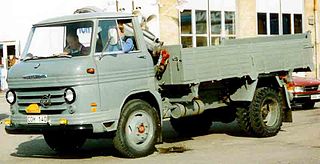
The Volvo Snabbe and Trygge was a series of light trucks produced by Swedish automaker Volvo between 1956 and 1975.

The Volvo LV71-series was a medium size truck produced by Swedish automaker Volvo between 1932 and 1935.

The Volvo F84/F85/F86 was a series of medium size trucks produced by Swedish automaker Volvo between 1965 and 1979.

The Volvo LV66-70 was a truck produced by Swedish automaker Volvo between 1931 and 1936.
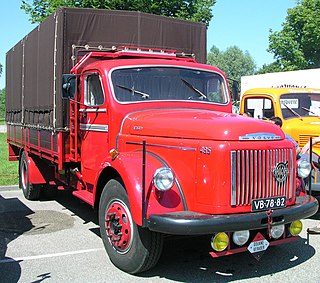
The Volvo Viking was a truck produced by Swedish automaker Volvo between 1953 and 1973.

The Volvo Titan was a heavy duty truck produced by Swedish automaker Volvo between 1951 and 1973.
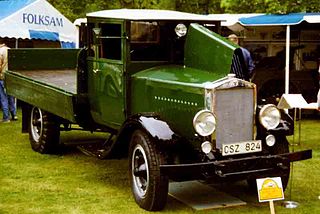
The Scania-Vabis 314/324/325 was a series of trucks produced by Swedish automaker Scania-Vabis between 1925 and 1936.
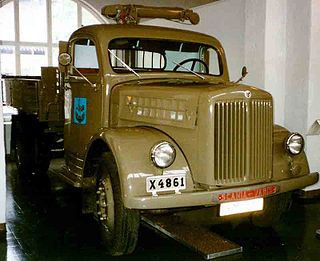
The Scania-Vabis L10/L40/L51 was a series of trucks produced by Swedish automaker Scania-Vabis between 1944 and 1959.

The Scania-Vabis L20/L60/L71 was a series of heavy duty trucks produced by Swedish automaker Scania-Vabis between 1946 and 1958.



